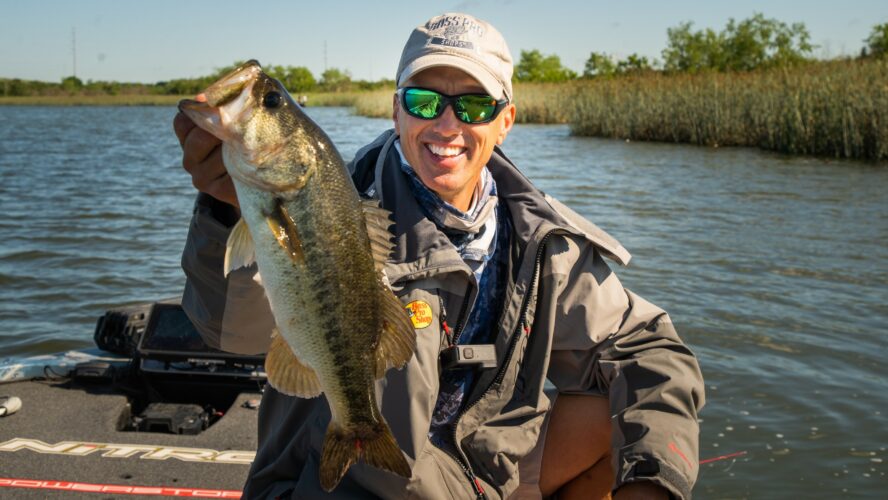EDWIN EVERS: Heavy Weights for Shallow Water

When I was young and just getting serious about bass fishing, all the flipping and pitching and Texas-rig worm experts said to use the lightest weight possible that allowed you to still feel your bait. That’s still pretty good advice, but there are some exceptions to that rule.
A big exception to the rule is happening right now over a lot of the country. It’s postspawn time on many fisheries, and that means that male bass are guarding their fry in shallow water — around brush, lily pads, boat docks and other cover.
It’s a time when a lot of anglers will catch fish throwing a weightless wacky worm like The General from Berkley. It’s a great bait, and I always have one rigged and ready to go, but with so many anglers doing it, I also like to be rigged and ready to show the bass something different, like a Berkley Pit Boss behind a heavy sinker.
The Heavy Weight Advantage
The heavy weight makes the Pit Boss fall really fast — so fast that it often generates a reaction strike from the bass. They have to eat it or get out of the way. Whereas a lot of anglers would fish it behind a 1/4- or 3/8-ounce sinker, I’ll bump it up to 1/2- or 3/4-ounce to really speed up the fall.
This is a great presentation in water that’s 8 feet deep or less and that has visibility of 12 to 14 inches or a little more.
My favorite bait for this pattern is the 4-inch Pit Boss in green pumpkin. I like to Texas rig it behind a 1/2-ounce slip sinker (3/4-ounce if the water’s 6 to 8 feet deep or more) on a 3/0 straight-shank Berkley Fusion19 worm hook. The Teflon coating on those hooks makes getting a good hookset easy!
I fish it on 25-pound-test Bass Pro Shops 100% Fluorocarbon line. I know that seems awfully heavy, but I put the bait in some pretty gnarly places, and 25-pound line can handle the punishment a lot better than lighter lines.
My go-to rod is a 7-foot-6 heavy action Bass Pro Shops Johnny Morris Signature Series casting rod, and I pair it with a BPS Platinum reel (8.3:1 gear ratio).
Another thing you’ll always see on my combo for this method is a Luna Sea Cush-It rod butt. The Cush-It cushions the rod, so I don’t bruise my ribs every time I set the hook. Also, since they come in a variety of colors, Cush-Its let me color-code my rods and find the one I’m looking for faster and easier.
I might have a combo with a 1/2-ounce sinker and another with a 3/4-ounce sinker. I’ll put a yellow Cush-It on the lighter rig and a red one on the heavier rig. With the color-coding, I don’t waste any time looking at the sinker and trying to figure out which is which.
A key thing about this pattern is to remember that you’re looking for a reaction strike — not a feeding strike. Ninety percent of your bites are going to come before the bait hits the bottom. Once it gets to the bottom, you can hop it once or twice, but you’re generally better off to crank it in and quickly make another pitch. It’s why I like a fast reel for this pattern. It lets me get the back in quickly and make a lot more presentations over the course of the day.
So, while other anglers are trying to finesse a wacky worm bite from these postspawn fish, change things up and show the fish something different. Be aggressive! Create a reaction bite with a heavy weight and trigger strikes with your presentation!